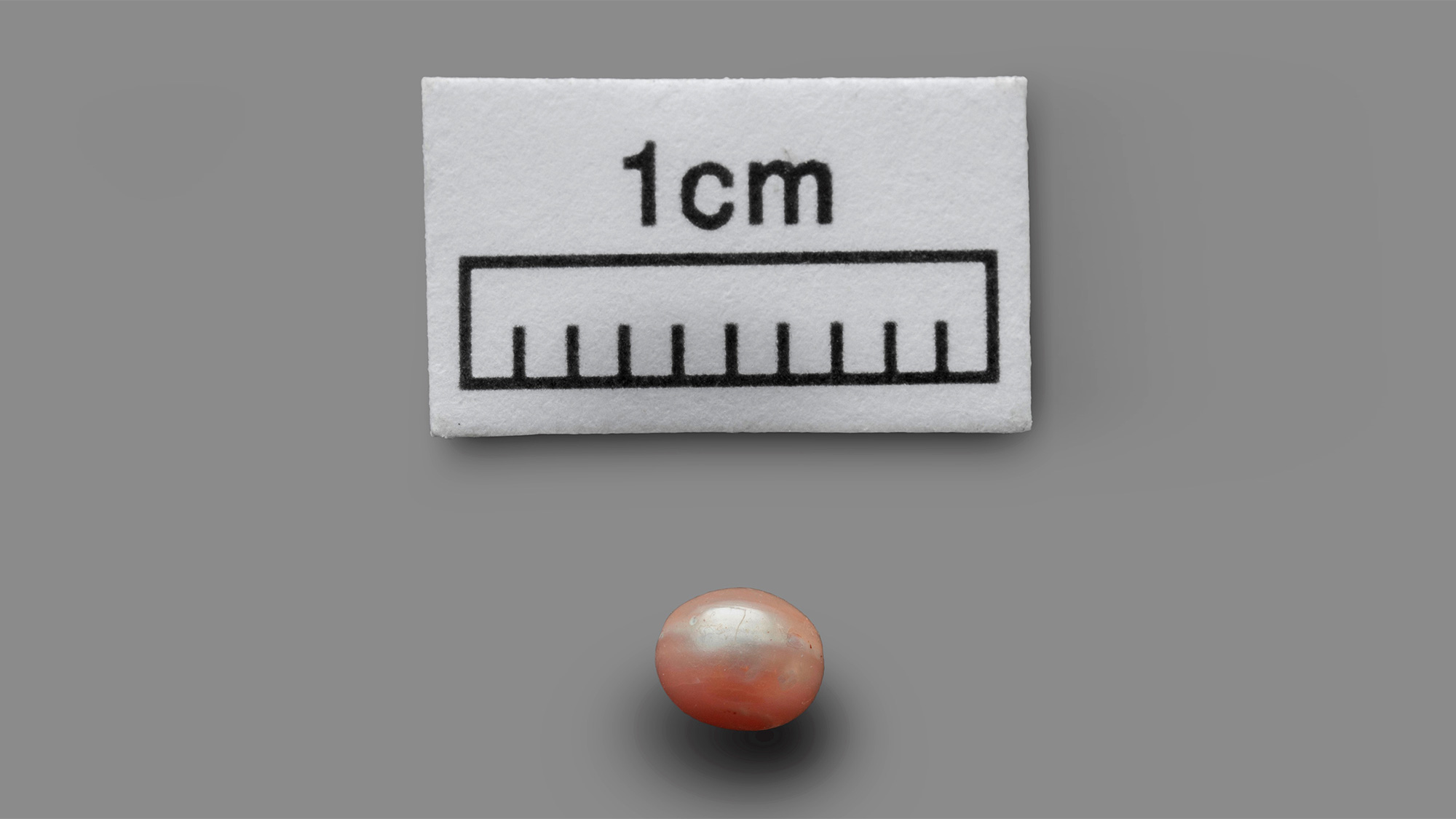The World's Oldest Pearl Was Just Discovered on an Island in the Persian Gulf
The pearl dates back 8,000 years to the Neolithic period.

Archeologists have discovered what they claim is the world's oldest natural pearl on Marawah Island, off the coast of Abu Dhabi. The pearl dates back 8,000 years to the Neolithic period — the last stage of the Stone Age.
Dubbed the "Abu Dhabi Pearl," this ancient gem is faint pink in color and about 0.3 centimeters (0.13 inches) long. It was found in a layer at a Neolithic site that dates to between 5800 B.C. and 5600 B.C., making it the oldest in the world, according to a statement from Abu Dhabi's Department of Culture and Tourism.
"The presence of pearls at archeological sites is evidence that the pearl trade existed from at least as far back as the Neolithic period," said Abdulla Khalfan Al-Kaabi, the director of the archeological survey unit at Abu Dhabi's Department of Culture and Tourism, in a video posted on the department's official Twitter account.
Related: Photos: Israel's Largest Neolithic Excavation
Indeed, "if we look at historical sources, we find more than one indication that Abu Dhabi was considered one of the major pearl centers," he said. Pearls could have been worn as jewelry or traded for goods from other civilizations, such as ceramics from Mesopotamia, according to the statement.

This Neolithic site, composed of collapsed stone structures, was first discovered in 1992 and many artifacts have been found there, including flint arrowheads, beads and ceramics. What's more, because this site sits on an island, many of the artifacts found, such as the bones of fish, turtles, dolphins, dugongs and oysters, relate to the sea. "People in this period were very familiar with the sea and considered it a major part of daily life," Al-Kaabi said.
Even centuries later, diving for pearls remained prominent in the area and was an important driver of the United Arab Emirates economy until the 1930s, according to the statement.
Get the world’s most fascinating discoveries delivered straight to your inbox.
The Abu Dhabi Pearl will be displayed for the first time in an upcoming exhibition called "10,000 Years of Luxury" at the Louvre Abu Dhabi.
- Images: Viking-Age Jewelry Revealed in Sparkling Photos
- Photos: Roman-Era Silver Jewelry and Coins Discovered in Scotland
- Photos: Gold, Amber and Bronze Treasures Found in Iron Age Grave
Originally published on Live Science.


Yasemin is a staff writer at Live Science, covering health, neuroscience and biology. Her work has appeared in Scientific American, Science and the San Jose Mercury News. She has a bachelor's degree in biomedical engineering from the University of Connecticut and a graduate certificate in science communication from the University of California, Santa Cruz.
 Live Science Plus
Live Science Plus





